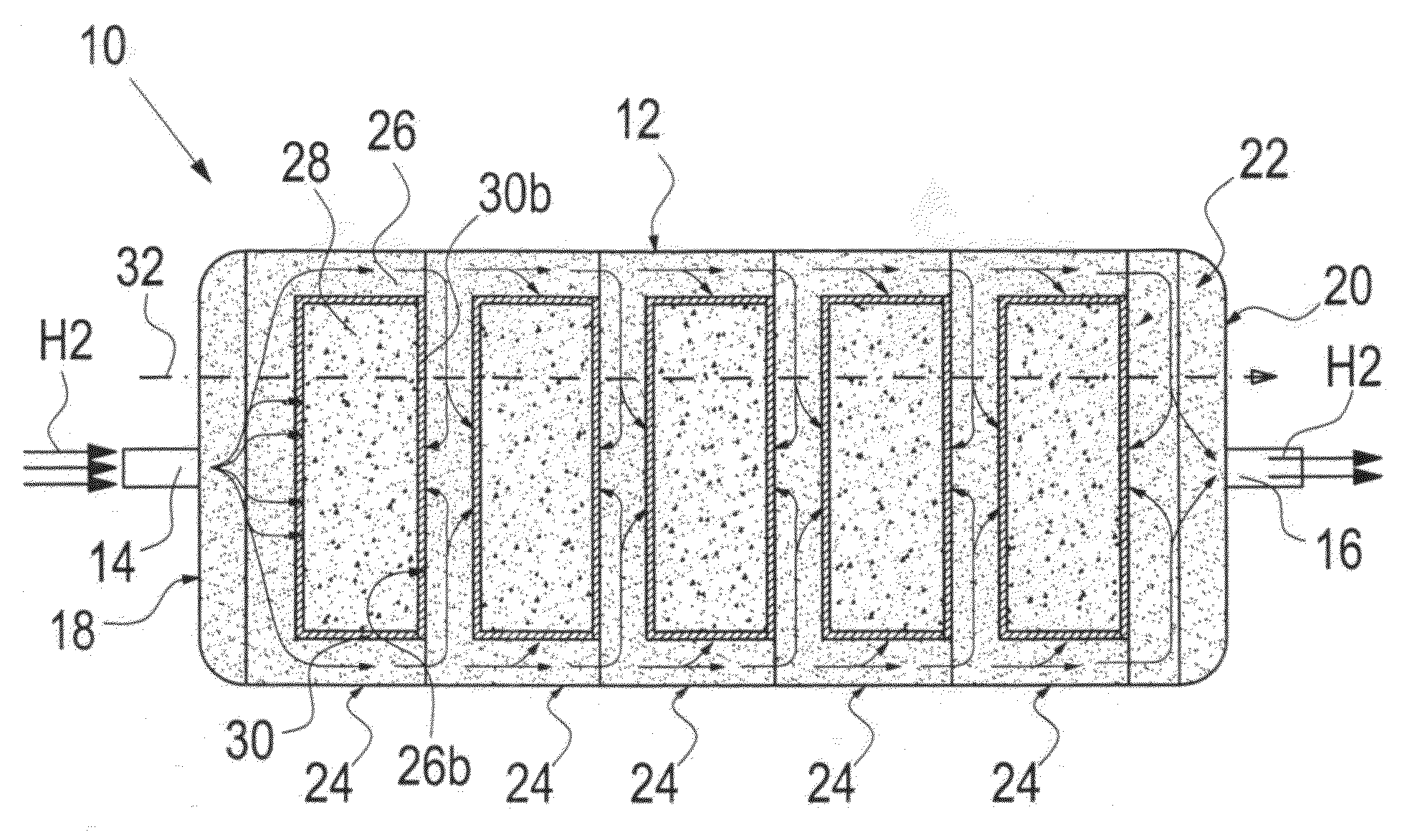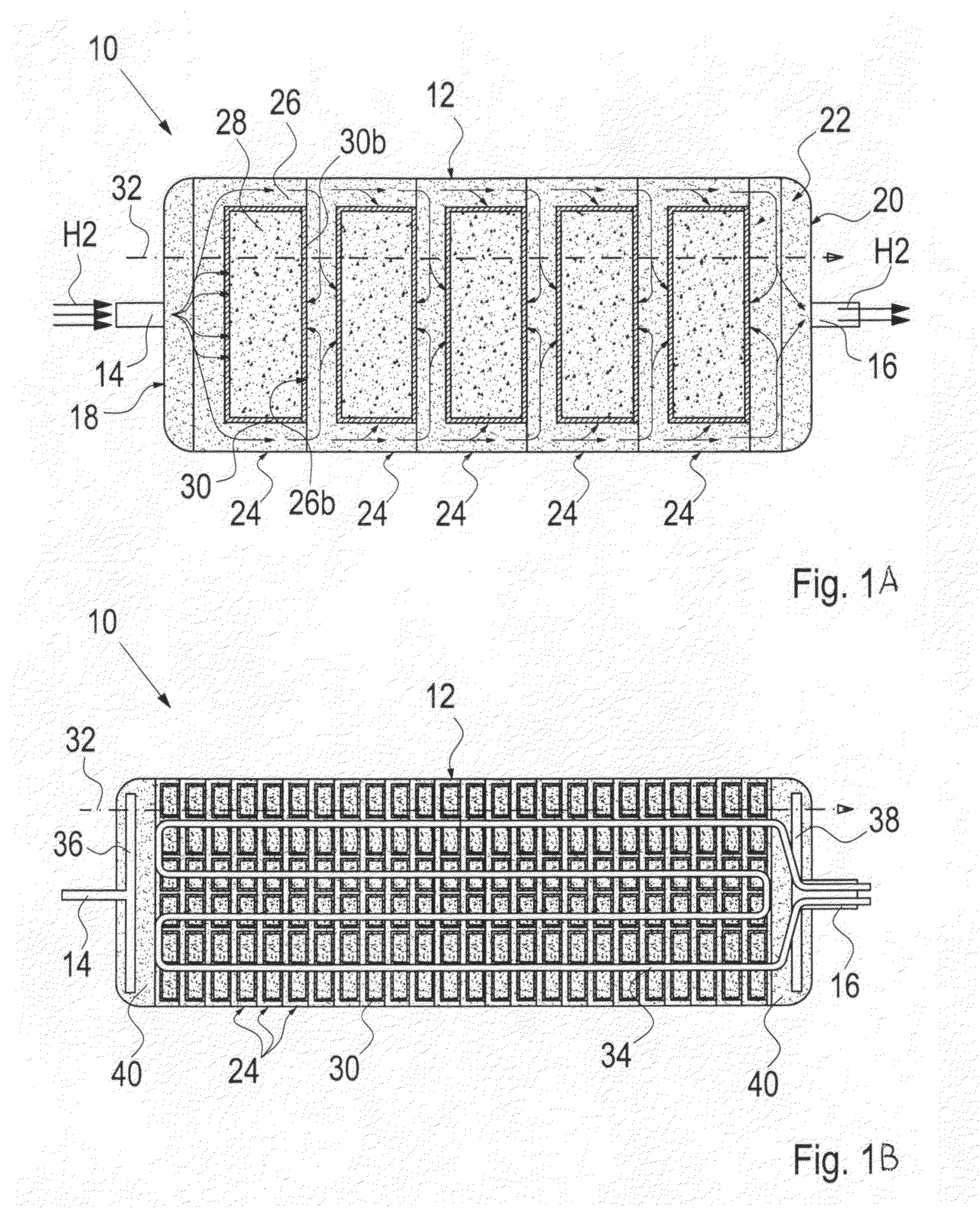Hydrogen reservoir and process for filling a hydrogen reservoir
a technology of hydrogen reservoir and hydrogen reservoir, which is applied in the direction of liquid handling, separation process, packaged goods type, etc., can solve the problems of comparatively easy handling of solid reservoirs, storage materials that can only absorb approximately 2% of their own weight in hydrogen at room temperature, etc., to speed up reaction kinetics, improve utilization of empty volume, and improve purposeful temperature control
- Summary
- Abstract
- Description
- Claims
- Application Information
AI Technical Summary
Benefits of technology
Problems solved by technology
Method used
Image
Examples
Embodiment Construction
[0032]In the figures, elements which have the same function are labeled with the same reference signs.
[0033]Two configurations of a hydrogen reservoir 10 according to the invention are shown in FIGS. 1A and 1B. The hydrogen reservoir 10 is configured as a type of storage pipe.
[0034]The hydrogen reservoir 10 comprises a housing 12, in which a plurality of units 24 are arranged adjacent one another in a row along a reservoir axis 32, filling the housing 12 between an inlet 14 at one end 18 and an outlet 16 at another end 20 of the housing 12. The reservoir axis 32 corresponds to the stack direction of the units 24.
[0035]As is additionally explained in greater detail in FIGS. 2A and 2B, each unit 24 consists of a cup-shaped porous body 26 with a recess 26a and a preferably closed base 26b. A container 30 comprising a cup-shaped body 30c closable with a lid 30b and preferably made from gas-permeable sintered metal is inserted into the recess 26a. The lid 30b may be adhesively bonded, so...
PUM
| Property | Measurement | Unit |
|---|---|---|
| pressure | aaaaa | aaaaa |
| pressure | aaaaa | aaaaa |
| pressure | aaaaa | aaaaa |
Abstract
Description
Claims
Application Information
 Login to View More
Login to View More - R&D
- Intellectual Property
- Life Sciences
- Materials
- Tech Scout
- Unparalleled Data Quality
- Higher Quality Content
- 60% Fewer Hallucinations
Browse by: Latest US Patents, China's latest patents, Technical Efficacy Thesaurus, Application Domain, Technology Topic, Popular Technical Reports.
© 2025 PatSnap. All rights reserved.Legal|Privacy policy|Modern Slavery Act Transparency Statement|Sitemap|About US| Contact US: help@patsnap.com



